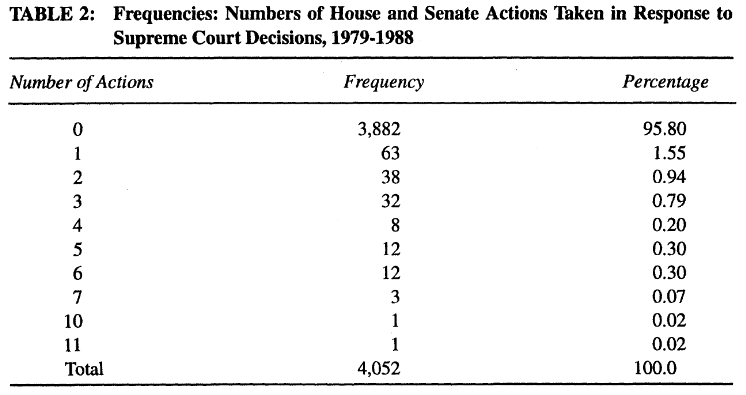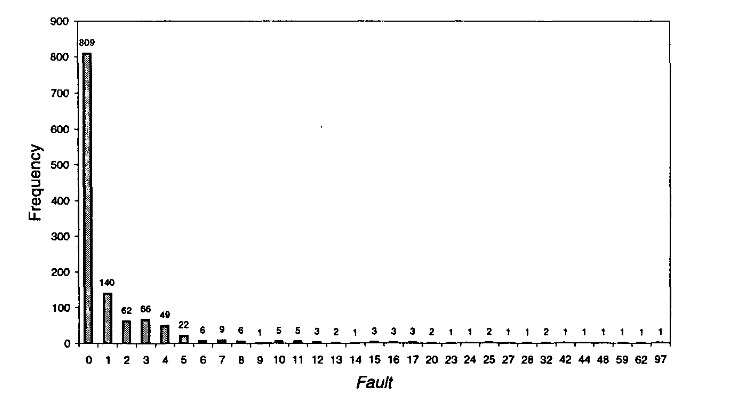Zeroinfl
A python package for Zero Inflated Regression
STAT 689 Course Project Spring '18
Project Repo: github.com/rkapr/zeroinfl
Presentation: rkapr.github.io/zeroinfl/
4/11/2018
Introduction:¶
Poisson Regression¶
Assumptions:¶
- $y_i \textrm{ } \big| \textrm{ } x_i \sim \mathrm{Poisson}$: $$P \left( Y_i = y_i \textrm{ } | \textrm{ } x_i \right) = \frac{\exp(-\mu_i) \cdot \mu_i^{y_i}}{y_i!} \cdot \mathbb{1} \left( y_i \in \{0, 1, 2, \ldots \} \right), \quad \mu_i = \exp \left( x_i' \beta \right) $$
- Equidispersion: $$E \left( Y_i \textrm{ } \big| \textrm{ } x_i\right) = \mu_i = Var \left( Y_i \textrm{ } \big| \textrm{ } x_i \right)$$
ZIP Model Specifications¶
Data is generated by one of two processes, with each process chosen with probability $\varphi_i$.¶
$ y_i = \begin{cases} 0 \quad &\textrm{with probability $\varphi_i$} \\ g(y_i) \quad &\textrm{with probability 1 - $\varphi_i$} \end{cases} $
This gives us the following probability mass function:¶
$ P\left(Y_i = y_i \textrm{ } \big| \textrm{ } x_i, z_i \right) = \begin{cases} \varphi_i + (1 - \varphi_i) \cdot \exp(-\mu_i) \quad &\textrm{if $y_i = 0$} \\ (1 - \varphi_i) \cdot \exp(-\mu_i) \cdot \mu_i^{y_i} \big/ y_i! \quad &\textrm{if $y_i > 0$} \end{cases} $
- $\varphi_i = F_i = F\left(z_i' \gamma\right)$ is the link function
- $x_i$ is the vector of covariates for the count model
- $z_i$ is the vector of covariates for the zero inflation model
- $\gamma$ is the vector of zero inflation coefficients
- $\mu_i = \exp{x_i' \beta}$, where $\beta$ is the vector of coefficients for the count model
ZIP Model Specifications¶
Expectation and Variance Calculations¶
- $E \left( Y_i \textrm{ } \big| \textrm{ } x_i, z_i \right) = \mu_i \cdot (1 - \varphi_i)$
- $Var\left(Y_i \textrm{ } \big| \textrm{ } x_i, z_i\right) = E\left( Y_i \textrm{ } \big| \textrm{ } x_i, z_i \right) (1 + \mu_i \varphi_i) > E \left( Y_i \textrm{ } \big| \textrm{ } x_i, z_i \right)$
Log-likelihood can then be written in a general form:¶
$$ \mathcal{L} = \sum_{i=1}^n w_i \log \left[ P\left( y_i \textrm{ } \big| \textrm{ } x_i, z_i \right) \right] $$
- Exact form of log-likelihood arises when link function chosen
- Maximize this with Newton-Raphson or EM
(Zero Inflated) Negative Binomial, Geometric Regression are other options that may better handle overdispersion¶
Algorithm flowchart¶

Classes and Methods¶
- LinkClass
- Instance Methods: link, link_inv, link_inv_deriv
- Classes Inheriting LinkClass: Logit, Probit, CLogLog, Cauchit, Log
- ZeroInflated
- Instance Methods:
- ziPoisson, ziNegBin, ziGeom
- gradPoisson, gradNegBin, gradGeom
- EM_estimate
- fit
- setter methods
- Static Methods:
- convert_params
- argument processing methods (dist, formula, link)
- Instance Methods:
- ZeroInflatedResults
- Instance methods: summary, printModel, predict, vcov
Usage¶
ZeroInflated(formula_str, df, params):¶
- Creates an instance of class ZeroInflated.
- Default params: dist = 'poisson', link = 'logit'
ZeroInflated(formula_str, df).fit(params):¶
- Returns an instance of class ZeroInflatedResults.
- Default params: EM = True, method = BFGS
ZeroInflated(formula_str, df).EM_estimate():¶
- Returns EM estimates of model as dict of pandas series.
ZeroInflated(formula_str, df).fit(params).method:¶
- method = summary, printModel, predict, vcov
Example dataset: DebTrivedi¶
Model for demand for medical care by elderly (ref.):¶
- 4406 indivduals aged 66 and above covered by medicare ('87/88 survey)
- Model demand for medicare: # of physician/non physician office and hospital visits ofp
- covariates for patients:
- hosp : # of hospital stays
- health: self perceived health status
- numchron: # of chronic conditions
- privins: private insurance indicator
- gender
- school
In [4]:
from zeroinfl import *
import numpy as np
import pandas as pd
from pandas.core import datetools
df = pd.read_csv('DebTrivedi.csv',index_col = [0])
sel = np.array([1, 6, 7, 8, 13, 15, 18])-1
df = df.iloc[:,sel]
formula_str = 'ofp ~ hosp + health + numchron + gender + school + privins | health'
import matplotlib.pyplot as plt
data_ofp = df.iloc[:,0].values.astype(int)
plt.hist(data_ofp, bins=np.arange(data_ofp.min(), data_ofp.max()), align = 'left', ec='black')
plt.xlabel('Number of physician office visits');plt.ylabel('Frequency')
plt.show()
Usage: printModel()¶
In [6]:
ZeroInflated(formula_str, df).fit().printModel()
Call:
ZeroInflated(formula_str='ofp ~ hosp + health + numchron + gender + school + privins | health', data=df, dist='poisson', offsetx=None, offsetz=None, link='logit', weights=None, missing='none')
Count model cefficients (poisson log link):
Intercept health[T.excellent] health[T.poor] gender[T.male] privins[T.yes] \
1.39367 -0.30775 0.25420 -0.06486 0.08544
hosp numchron school
0.15913 0.10328 0.01959
Zero-inflation model coefficients (binomial with logit link):
Intercept health[T.excellent] health[T.poor]
-1.73364 0.47491 -0.39916
Results from pscl package in R: print()
> model <- pscl::zeroinfl(ofp ~ health+gender+privins+hosp+numchron+school| health,
data = dt, dist = 'poisson')
> print(model)
Call:
pscl::zeroinfl(formula = ofp ~ health + gender + privins + hosp + numchron + school | health,
data = dt, dist = "poisson")
Count model coefficients (poisson with log link):
(Intercept) healthpoor healthexcellent gendermale privinsyes hosp
1.39367 0.25420 -0.30775 -0.06486 0.08544 0.15913
numchron school
0.10328 0.01959
Zero-inflation model coefficients (binomial with logit link):
(Intercept) healthpoor healthexcellent
-1.7336 -0.3992 0.4749
Usage: summary()¶
In [4]:
ZeroInflated(formula_str, df).fit().summary()
Call:
ZeroInflated(formula_str='ofp ~ hosp + health + numchron + gender + school + privins | health', data=df, dist='poisson', offsetx=None, offsetz=None, link='logit', weights=None, missing='none')
Pearson residuals:
Min 1Q Median 3Q Max
-28.81532 -3.64394 -1.42507 1.97142 72.65782
Count model cefficients (poisson log link):
| Estimate|Std. Error| z value| Pr(>|z|)
----------------------------------------------------------------
Intercept| 1.3937| 0.0245| 56.86| <2e-16
health[T.excellent]| -0.3078| 0.0314| -9.791| <2e-16
health[T.poor]| 0.2542| 0.0177| 14.339| <2e-16
gender[T.male]| -0.0649| 0.0131| -4.946| 7.5608e-7
privins[T.yes]| 0.0854| 0.0173| 4.936| 7.9923e-7
hosp| 0.1591| 0.0061| 26.262| <2e-16
numchron| 0.1033| 0.0047| 21.805| <2e-16
school| 0.0196| 0.0019| 10.393| <2e-16
Zero-inflation model coefficients (binomial with logit link):
| Estimate|Std. Error| z value| Pr(>|z|)
----------------------------------------------------------------
Intercept| -1.7336| 0.0481| -36.04| <2e-16
health[T.excellent]| 0.4749| 0.1455| 3.265| 1.0960e-3
health[T.poor]| -0.3992| 0.1466| -2.724| 6.4570e-3
---
Number of iterations in BFGS optimization: 13
Log-likelihood: -1.629e+4 on 11 Df.
Results from pscl package in R: summary()
> summary(model)
Call:
pscl::zeroinfl(formula = ofp ~ health + gender + privins + hosp + numchron +
school | health, data = dt, dist = "poisson")
Pearson residuals:
Min 1Q Median 3Q Max
-2.5417 -1.2132 -0.4612 0.5889 25.1526
Count model coefficients (poisson with log link):
Estimate Std. Error z value Pr(>|z|)
(Intercept) 1.393672 0.024506 56.870 < 2e-16 ***
healthpoor 0.254201 0.017726 14.340 < 2e-16 ***
healthexcellent -0.307754 0.031428 -9.792 < 2e-16 ***
gendermale -0.064859 0.013111 -4.947 7.54e-07 ***
privinsyes 0.085441 0.017310 4.936 7.97e-07 ***
hosp 0.159127 0.006059 26.262 < 2e-16 ***
numchron 0.103280 0.004736 21.806 < 2e-16 ***
school 0.019591 0.001885 10.395 < 2e-16 ***
Zero-inflation model coefficients (binomial with logit link):
Estimate Std. Error z value Pr(>|z|)
(Intercept) -1.73364 0.04809 -36.050 < 2e-16 ***
healthpoor -0.39916 0.14655 -2.724 0.00646 **
healthexcellent 0.47490 0.14542 3.266 0.00109 **
---
Signif. codes: 0 '***' 0.001 '**' 0.01 '*' 0.05 '.' 0.1 ' ' 1
Number of iterations in BFGS optimization: 17
Log-likelihood: -1.629e+04 on 11 Df
Results¶
Zero Inflated Poisson: logit link¶
| Count: | Python | R |
|---|---|---|
| Intercept | 1.39367 | 1.39367 |
| health[T.excellent] | -0.30775 | -0.30775 |
| health[T.poor] | 0.25420 | 0.25420 |
| gender[T.male] | -0.06486 | -0.06486 |
| privins[T.yes] | 0.08544 | 0.08544 |
| hosp | 0.15913 | 0.15913 |
| numchron | 0.10328 | 0.10328 |
| school | 0.01959 | 0.01959 |
| Zero: | Python | R |
|---|---|---|
| Intercept | -1.73364 | -1.73364 |
| health[T.excellent] | 0.47490 | 0.47489 |
| health[T.poor] | -0.39916 | -0.39916 |
Results¶
Zero Inflated Geometric: logit link¶
| Count: | Python | R |
|---|---|---|
| Intercept | 0.92523 | 0.92523 |
| health[T.excellent] | -0.34160 | -0.34160 |
| health[T.poor] | 0.31351 | 0.31352 |
| gender[T.male] | -0.12678 | -0.12678 |
| privins[T.yes] | 0.22483 | 0.22483 |
| hosp | 0.22057 | 0.22057 |
| numchron | 0.17603 | 0.17603 |
| school | 0.02689 | 0.02689 |
| Zero: | Python | R |
|---|---|---|
| Intercept | -24.34361 | -24.33868 |
| health[T.excellent] | 10.00308 | 9.99858 |
| health[T.poor] | 19.44489 | 19.43996 |
Results¶
Zero Inflated Negative Binomial: logit link¶
| Count: | Python | R |
|---|---|---|
| Intercept | 0.94181 | 0.94206 |
| health[T.excellent] | -0.32944 | -0.32945 |
| health[T.poor] | 0.32891 | 0.32884 |
| gender[T.male] | -0.12468 | -0.12465 |
| privins[T.yes] | 0.21839 | 0.21832 |
| hosp | 0.22252 | 0.22250 |
| numchron | 0.17366 | 0.17363 |
| school | 0.02667 | 0.02667 |
| theta | 1.25876 | 1.25925 |
| Zero: | Python | R |
|---|---|---|
| Intercept | -5.04317 | -5.02321 |
| health[T.excellent] | 1.08234 | 1.06984 |
| health[T.poor] | 1.61952 | 1.60087 |
- Major:
- Summary statistics, predict()
- Vuong's Test
- Testing on 4 more datasets
- Minor:
- Dealing with missing values
- Functions docs
- Use standard names for ZeoInflatedResults class attributes (eg from python glm results class names)
- Exploring:
- Should ZeroInflatedResults class be inherited from ZeroInflated class
- Should ZeroInflated class be inherited from Loglikelihood class
- Future:
- Regularized optimization for ZIP, ZINB, ZIG
- Negative Binomial regression with joint estimation of theta and mu with variable weights.
- Use above for optimal EM estimation of starting values for ZINB.


